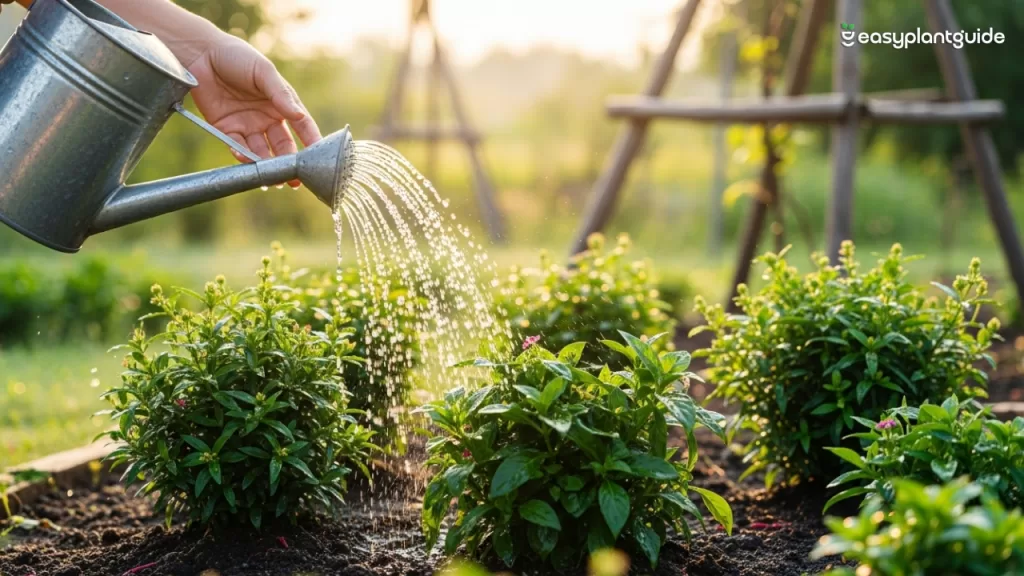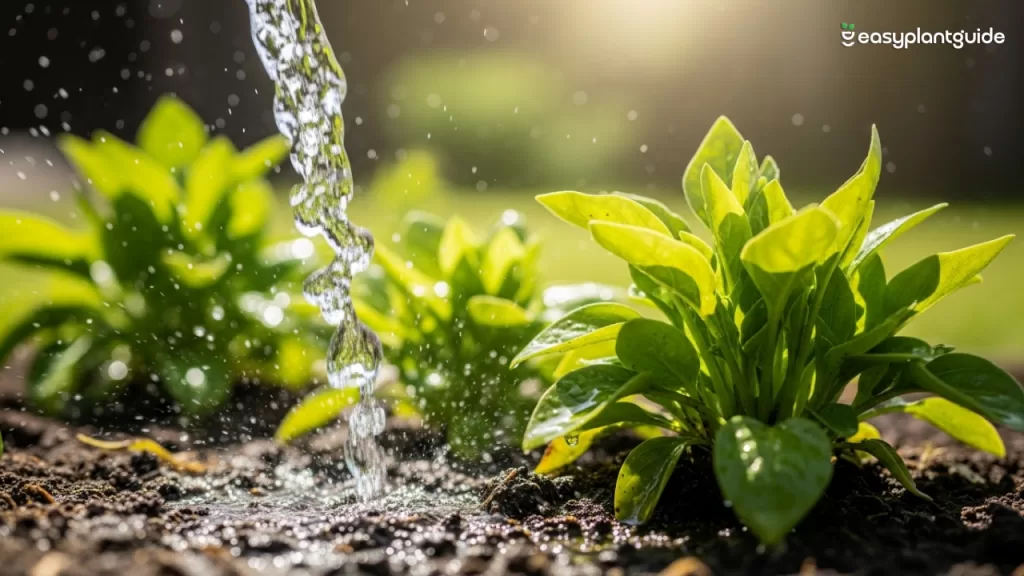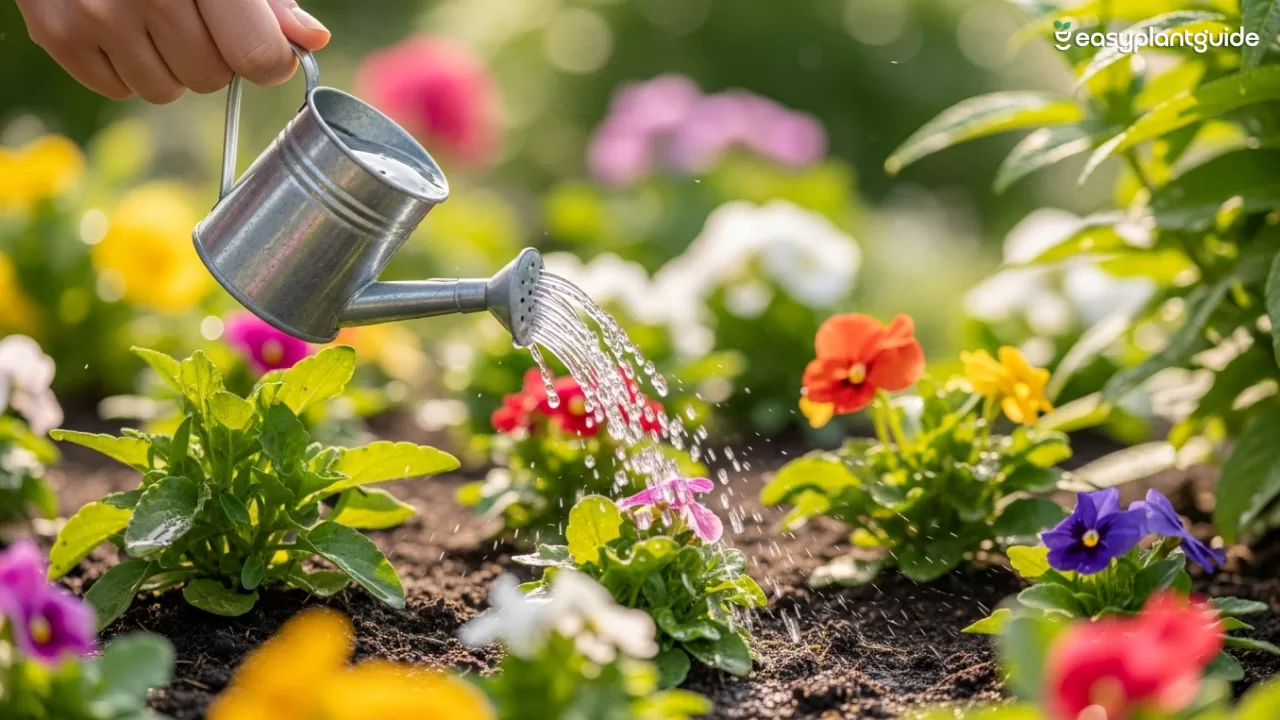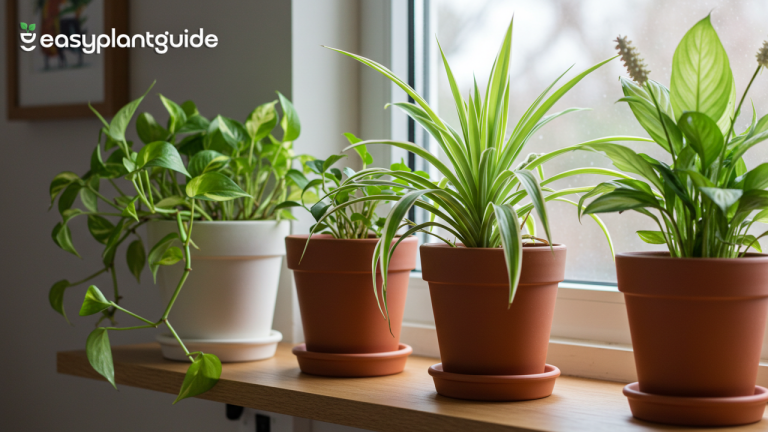3 Ways of Watering the Plants Without Stress or Waste
Watering plants sounds simple, right? You grab a watering can, splash some water, and call it a day. But here’s the catch — watering the wrong way can do more harm than good. Overwatering can drown the roots, while underwatering leaves your plants gasping for life. Learning the 3 ways of watering the plants isn’t just about keeping them alive — it’s about helping them thrive.
In this guide, we’ll explore 3 ways of watering the plants that save time, reduce waste, and give your garden the love it deserves. Whether you’re a houseplant parent or a backyard gardener, these methods will make your watering routine easier and more effective.
Why Watering Plants Properly Matters
Plants, just like humans, need the right balance of hydration. Too much or too little can throw them off balance. Water helps transport nutrients, keeps leaves firm, and supports photosynthesis. But when done incorrectly, you might face root rot from excess moisture, wilting leaves due to dehydration, nutrient deficiency because of uneven watering, and increased susceptibility to pests and diseases.
Understanding the 3 ways of watering the plants is essential because each method delivers water differently, affecting soil moisture, root health, and overall plant growth. By learning the best techniques, you can ensure your plants receive the right amount of water consistently, keeping them healthy, vibrant, and thriving in any garden or indoor setting.
Watering Tools You’ll Love
Using the right tools can make practicing the 3 ways of watering the plants much easier, more efficient, and enjoyable. The right equipment ensures that water reaches the roots properly, prevents waste, and helps your plants thrive. Some essential tools for all three watering methods include:
- Watering cans for small gardens. Perfect for hand watering potted plants or delicate seedlings, giving you full control over how much water each plant receives.
- Soaker hoses for even watering. Ideal for garden beds and larger areas, helping drip irrigation or hand watering reach plants evenly without oversaturating the soil.
- Moisture meters to check soil hydration. These handy tools let you monitor moisture levels, ensuring that whether you hand water, drip irrigate, or use sprinklers, your plants get just the right amount of water.
- Timers for automated irrigation. Great for drip irrigation or sprinklers, timers ensure consistent watering schedules and save you time and effort.
- Sprinkler attachments for larger spaces. Perfect for lawns and wide garden areas, sprinklers help you cover more ground efficiently while practicing one of the 3 ways of watering the plants effectively.
3 Smart Ways of Watering Plants

Let’s dive into the 3 ways of watering the plants that every gardener should know. Each method has its perks, drawbacks, and best-use cases, so you can choose the one that works best for your garden or indoor plants.
1. Hand Watering – The Classic Method
Hand watering is the most traditional and personal way of nurturing plants. It’s ideal for small gardens, potted plants, or delicate seedlings. Hand watering is one of the simplest of the 3 ways of watering the plants, giving you full control over how much water each plant receives.
Why gardeners love it:
- You can visually inspect plants for health issues while watering.
- Perfect for potted or container plants.
- No expensive setup required.
Tips for Perfect Hand Watering:
- Use a watering can with a gentle spout to avoid soil splash.
- Water the base of the plant, not the leaves.
- Do it early in the morning or late evening to reduce evaporation.
Pros and Cons:
| Advantages | Disadvantages |
|---|---|
| Gives full control | Time-consuming for large gardens |
| Helps spot plant problems early | Uneven watering if not careful |
| Ideal for indoor plants | Requires regular effort |
2. Drip Irrigation – The Efficient Saver
Drip irrigation delivers water directly to the plant’s roots using a network of tubes and emitters. This method is another of the 3 ways of watering the plants that is highly efficient for vegetable beds, flower borders, and container gardens.
Why drip irrigation rocks:
- Conserves up to 70% more water than hand watering.
- Reduces weed growth by targeting only plant roots.
- Keeps foliage dry, minimizing fungal diseases.
How It Works:
Water slowly drips through emitters placed near each plant’s base, ensuring consistent moisture levels and preventing soil erosion.
Quick Installation Tips:
- Place emitters 6–12 inches from plant stems.
- Install a timer to automate watering schedules.
- Check for clogs in tubes regularly.
Pros and Cons:
| Advantages | Disadvantages |
|---|---|
| Saves water and time | Initial setup can be costly |
| Promotes deeper root growth | Requires maintenance |
| Reduces evaporation loss | Not ideal for small potted plants |
3. Sprinkler System – The Convenient All-Rounder
Sprinklers are like gentle rain for your garden, covering large areas efficiently. This is the third method in the 3 ways of watering the plants, perfect for lawns or open spaces where hand watering would take too long.
Why gardeners choose sprinklers:
- Covers large areas efficiently.
- Easy to set up and maintain.
- Can be automated for convenience.
Using Sprinklers Wisely:
- Avoid watering on windy days to prevent water loss.
- Water in early morning when temperatures are cooler.
- Adjust sprinkler heads for even coverage.
5 Smart Tips for Effective Sprinkler Use:
- Check your system for leaks.
- Avoid overwatering your lawn.
- Adjust timers seasonally.
- Combine with rain sensors for efficiency.
- Clean nozzles regularly.
Pros and Cons:
| Advantages | Disadvantages |
|---|---|
| Covers large areas quickly | Can waste water if not monitored |
| Easy to automate | May not reach plant roots precisely |
| Suitable for lawns | Can be costly to install |
How Much Water Do Plants Really Need?
Not all plants are created equal. Some love moisture, while others prefer dry feet. A general rule? Water deeply, but less frequently. Let the top inch of soil dry before watering again. Here’s a quick guide:
| Plant Type | Watering Frequency | Notes |
|---|---|---|
| Succulents & Cacti | Once every 10–14 days | Prefer dry soil |
| Houseplants | Every 5–7 days | Adjust for humidity |
| Vegetables | 2–3 times a week | Deep watering preferred |
| Flower Beds | Every 2–3 days | Check topsoil dryness |
Signs Your Plants Are Overwatered or Underwatered
No matter which of the 3 ways of watering the plants you use, it’s important to recognize the signs of overwatering and underwatering to keep your plants healthy. Overwatered plants often show yellow, drooping leaves, mushy stems, and sometimes mold forming on the soil surface. On the other hand, underwatered plants may have dry, brittle leaves, slow growth, and soil that is pulling away from the edges of pots.
By keeping an eye out for these indicators, you can adjust your watering routine to match your plants’ needs, ensuring they thrive regardless of the watering method you choose.
Common Watering Mistakes to Avoid
Even seasoned gardeners slip up sometimes, especially when practicing the 3 ways of watering the plants. Common mistakes include watering during the heat of the day, which can cause water to evaporate before reaching the roots. Splashing water onto leaves instead of targeting the roots can promote fungal growth, while ignoring soil type and drainage may lead to overwatering or underwatering. Over-relying on automatic systems without monitoring soil moisture and forgetting to adjust for changing weather conditions are also frequent errors that can affect plant health.
Eco-Friendly Watering Tips
Using the 3 ways of watering the plants efficiently can also help conserve water and protect the environment. Collecting rainwater in barrels provides a sustainable water source, and applying mulch helps lock in soil moisture. Reusing greywater from washing vegetables is another eco-friendly option. Choosing drought-tolerant plants reduces overall water needs, and watering less frequently but deeply encourages stronger root growth while minimizing waste. By combining proper watering techniques with these green practices, you can nurture your garden and the planet at the same time.
How to Know If You’re Doing It Right

No matter which of the 3 ways of watering the plants you choose, ensuring your plants receive the right amount of water is essential for their health and growth. One simple method is to stick your finger about an inch into the soil — if it feels dry, it’s time to water. This helps prevent both overwatering and underwatering, which are common mistakes even experienced gardeners make.
For a more precise approach, you can invest in a soil moisture meter. These handy tools give accurate readings of soil hydration, helping you adjust your watering routine according to your plant’s needs. The goal is consistent soil moisture that reaches the roots without making the soil soggy or compacted.
By regularly checking soil conditions and observing plant responses, you can get the most out of the 3 ways of watering the plants. Over time, you’ll develop an intuitive understanding of your garden’s water needs, ensuring stronger roots, healthier leaves, and more vibrant blooms.
5 Handy Tips for Hassle-Free Watering
Using the 3 ways of watering the plants effectively becomes much easier when you follow these simple tips:
- Group plants by watering needs. Placing plants with similar water requirements together makes it easier to apply the right amount of water for each group, whether you’re hand watering, using drip irrigation, or sprinklers.
- Add organic compost to retain moisture. Enriching your soil with compost helps it hold water longer, enhancing the efficiency of all 3 ways of watering the plants.
- Keep mulch 2–3 inches deep. Mulching reduces evaporation, keeps soil temperature stable, and helps any watering method you choose reach the roots more effectively.
- Avoid watering in full sun. Watering during cooler parts of the day, such as early morning or late evening, ensures that the water is absorbed rather than evaporating, optimizing the benefits of the 3 ways of watering the plants.
- Clean your watering tools regularly. Maintaining watering cans, drip emitters, and sprinklers prevents clogs, disease transfer, and ensures all 3 ways of watering the plants work efficiently.
Conclusion
Watering plants might seem basic, but mastering it can transform your garden from “meh” to magnificent. By understanding and applying the 3 ways of watering the plants — hand watering, drip irrigation, and sprinklers — you can choose the method that fits your lifestyle, garden size, and plant types.
Remember, it’s not just about how much you water, but how effectively you do it. Each of the 3 ways of watering the plants has its own advantages, and when used correctly, they ensure your plants get the hydration they need to thrive. So next time you pick up a watering can, set up a drip system, or turn on a sprinkler, think smart — because happy roots mean healthy, vibrant blooms!
Explore more plant blogs and grow your green journey with us.




